Exhibition dates: 11th November 2016 – 13th March 2017
David Hockney (English, b. 1937)
Untitled, 91
2009
iPhone drawing
Collection of the artist
© David Hockney
Drawing inside the line
What Hockney does not do in his recent work, is draw inside the line.* By this I mean he fails to invest each line with feeling and empathy. For Hockney, the line is only a means to an end, for his art is basically reductive: how little can I get away with to impart my message.
The Yosemite paintings riff off Ansel Adams photographs; the 82 portraits & 1 still life (2013-2016, below) are some of the most dire portraits I have seen in a long time; and the paintings within paintings (or videos with split screens), develop his earlier Polaroid photography work with multiple perspectives making up one image, to little benefit. He even self quotes in A bigger card players (2015, below) with a painting of his earlier photographic work in the background.
Recently there were 553 Likes on one posting on the NGV Facebook page – it’s marvellous, fabulous, love the colours, just brilliant – and not a critical word to be heard. You could call this a kind of popular hysteria. But there has been little professional buzz around the exhibition.
For the viewer there is the invitation to reimagine, to see the world in different ways. But am I convinced? Not at all. I’ve seen the exhibition twice and have been totally underwhelmed both times. It’s just a contemporary version of Etch A Sketch – iPad art for the noughties.
Further, there seems to be little feeling about the whole enterprise. It’s as though he couldn’t push the art out fast enough, just like taking selfies on an iPhone and uploading them to Instagram. And this interchange between computer and eye, where the paintings look like computer aided anythings – is just rubbish.
I’ll leave you with a long but important text by Max Raphael quoted in John Berger’s Landscapes (below). Here Raphael articulates the concept of pictorial space and denotes the importance of an intensity of figuration. For Raphael, originality of constitution is NOT the urge to be different from others (iPad paintings etc…), it is the grasping of the origin of things: the roots of both ourselves and things. While suggestive form is a form of shorthand for the artist to convey the contents and feelings within himself to the viewer as Raphael notes, the artist must act upon the whole man, i.e. he must make the viewer live in the work’s own mode of reality.
This is something that Hockney never gets inside and never achieves. In the end the work is just appearance and illusion or, as someone said to me recently, smoke and mirrors.
Dr Marcus Bunyan
Many thankx to the NGV for allowing me to publish the media images in this posting (first section of the posting).
All other images © David Hockney, Dr Marcus Bunyan and the National Gallery of Victoria. Not to be reproduced without permission.
David Hockney (English, b. 1937)
Untitled, 655
2011
iPad drawing
Collection of the artist
© David Hockney
What are the methods of figuration?
1/ The structuring of space.
2/ The rendering of forms within that space effective.
The structuring of space has nothing to do with perspective: it’s tasks are to dislocate space so that it ceases to be static (the simplest example is that of the forward-coming relaxed leg in standing Greek figures) and to divide space into quanta so that we become conscious of its divisibility, and thus cease to be creatures of its continuity (for example, the receding planes parallel to the picture surface in late Cezannes). “To create pictorial space is to penetrate not only into the depths of the picture but also into the depths of our intellectual system of co-ordinates (which matches that of the world). Depth of space is depth of essence or else it is nothing but appearance and illusion.”
“The distinction between actual form and effective form is as follows: Actual form is descriptive; effective form is suggestive, i.e. through it the artist, instead of trying to convey the contents and feelings to the viewer by fully describing them, provides him only with as many clues as he needs to produce these contents and feelings within himself. To achieve this the artist must act not upon individual sense organs but upon the whole man, i.e. he must make the viewer live in the work’s own mode of reality.”
What does figuration, with this special material (see above), achieve?
“Intensity of figuration is not display of the artist’s strength; not vitality, which animates the outer world with the personal energies of the creative artist; not logical or emotional consistency, with which a limited problem is thought through or felt through to its ultimate consequences. What it does denote is the degree to which the very essence of art has been realised: the undoing of the world of things, the construction of the world of values, and hence the constitution of a new world. The originality of this constitution provides us with a general criterion by which we can measure intensity of figuration. Originality of constitution is not the urge to be different from others, to produce something entirely new; it is … the grasping of the origin: the roots of both ourselves and things.”
Max Raphael quoted in John Berger. “Revolutionary Undoing: On Max Raphael’s The Demands of Art,” John Berger. Landscapes. London and New York: Verso, 2016, pp. 50-51.
* “A line, an area of tone, is important not really because it records what you have seen, but because of what it will lead you on to see. Following up its logic in order to check its accuracy, you find confirmation or denial in the object itself or in your memory of it. Each confirmation or denial brings you closer to the object, until finally you are, as it were, inside it: the contours you have drawn no longer marking the edge of what you have seen, but the edge of what you have become.”
John Berger. “The Basis of All Painting and Sculpture is Drawing,” in John Berger. Landscapes. London and New York: Verso, 2016, p. 27.
David Hockney (English, b. 1937)
Self Portrait, 25 March 2012, No. 3 (1236)
iPad drawing
Collection of the artist
© David Hockney
David Hockney (English, b. 1937)
Self-portrait, 20 March 2012 (1219)
iPad drawing
Collection of the artist
© David Hockney
David Hockney (English, b. 1937)
Self-portrait, 21 March 2012 (1223)
iPad drawing
Collection of the artist
© David Hockney
David Hockney (English, b. 1937)
Self-portrait, 25 March 2012, No. 2 (1233)
iPad drawing
Collection of the artist
© David Hockney
David Hockney (English, b. 1937)
Bigger trees near Warter or/ou Peinture sur le motif pour le nouvel age post-photographique
2007
Oil on 50 canvases
459 x 1225cm (overall)
Tate, London
Presented by the artist 2008 (T12887)
© David Hockney
Photo credit: Richard Schmidt
David Hockney (English, b. 1937)
Yosemite I, October 16th 2011 (1059)
iPad drawing printed on four sheets of paper (39 x 35″ each) mounted on four sheets of Dibond
Edition of 12
77 3/4 x 69 3/4″ overall
Collection of the artist
© David Hockney
Photo credit: Richard Schmidt
David Hockney (English, b. 1937)
The Arrival of Spring in Woldgate, East Yorkshire in 2011 (twenty eleven) – 31 May, No. 1
iPad drawing printed on six sheets of paper (46 1/2 x 35″ each), mounted on four sheets of Dibond
Edition of 10
290.8 x 218.4cm (overall)
© David Hockney
Photo credit: Richard Schmidt
David Hockney (English, b. 1937)
The Arrival of Spring in Woldgate, East Yorkshire in 2011 (twenty eleven) – 29 January
iPad drawing printed on four sheets of paper (46 1/2 x 35″ each), mounted on four sheets of Dibond
Edition of 10
290.8 x 218.4cm (overall)
© David Hockney
Photo credit: Richard Schmidt
David Hockney (English, b. 1937)
Barry Humphries, 26-28 March
2015
Acrylic on canvas
48 x 36″
© David Hockney
Photo credit: Richard Schmidt
David Hockney (English, b. 1937)
The group XI, 7-11 July 2014
Acrylic on canvas
122 x 183cm
Collection of the artist
© David Hockney
Photo credit: Richard Schmidt
David Hockney (English, b. 1937)
4 blue stools
2014
Photographic drawing printed on paper, mounted on Dibond
edition 5 of 25
170.3 x 175.9cm (image)
Collection David Hockney Foundation
© David Hockney
Photo credit: Richard Schmidt
David Hockney (English, b. 1937)
A bigger card players
2015
Photographic drawing printed on paper mounted on aluminium
edition 1 of 12
177.2 x 177.2cm
Collection David Hockney Foundation
© David Hockney
Photo credit: Richard Schmidt
David Hockney (English, b. 1937)
The jugglers
2012
18 digital videos synchronised and presented on 18 55-inch screens to comprise a single artwork
22 min
205.7 x 728.0cm (overall)
Collection of the artist
© David Hockney
The National Gallery of Victoria presents a major solo exhibition of one of the most influential artists of the past century, David Hockney: Current, open until 13 March 2017 at NGV International. The exhibition, curated by the NGV in collaboration with David Hockney and his studio, features more than 1200 works from the past decade of the artist’s career – some new and most never-before-seen in Australia – including paintings, digital drawings, photography and video works.
Exhibition highlights include hundreds of extraordinary and sometimes animated, iPad digital drawings of still life compositions, self-portraits and large-scale landscapes including scenes of Yosemite National Park. Another highlight is The four seasons, Woldgate Woods (Spring 2011, Summer 2010, Autumn 2010, Winter 2010), a breath-taking and immersive video work showcasing the changing landscape of Hockney’s native Yorkshire, each season comprised of nine high-definition screens. A dedicated 60-metre long gallery lined with more than 80 recently painted acrylic portrait paintings of the artist’s family, friends and notable subjects including artists John Baldessari and Barry Humphries is also a major highlight.
Arguably Britain’s greatest living contemporary artist, David Hockney, 79, today works prolifically as a painter, also experimenting and mastering new technologies, producing thousands of drawings and works created on iPhone, iPad and in video. The artist will create a number of new works for the exhibition including an immersive room installation, which will be exhibited for the first time at the NGV.
Tony Ellwood, Director, NGV said: ‘It is a privilege to collaborate with David Hockney, one of the world’s most celebrated and truly innovative artists, to develop this exhibition which features dynamic new works and highlights of his oeuvre from the past decade. His recent use of cutting-edge technology will provide an engaging experience for visitors and reveal the mastery and skill behind his ever-evolving practice.’
Minister for Creative Industries Martin Foley said: ‘Presenting the work of the illustrious artist David Hockney is yet another coup for the NGV and presents an unprecedented opportunity for Victorians and all visitors to the state to experience the work of one of the world’s greatest living artists. It will no doubt be another must-see event on Victoria’s cultural calendar this summer.’
Other highlights of the exhibition include Bigger Trees Near Warter, Hockney’s largest painting comprised of 50 oil on canvas panels, and the centrepiece of Hockney’s hugely popular exhibition A Bigger Picture at the Royal Academy, London and now owned by the Tate. Transforming the gallery, the three remaining walls of this space will display 1:1 digital versions of the same work and it will be the first time that this major work has been exhibited in Australia.
Hockney’s continued investigation into multi-point perspective will be represented by The Jugglers, an 18-screen, 22-minute video that depicts the artist in a room of jugglers, injecting Hockney’s signature playfulness into the exhibition. Again utilising technology to reveal a study in perspective, Hockney’s Seven Yorkshire Landscapes is a 12-minute multi-viewpoint video displayed on 18 tiled, 55-inch monitors which will monumentally showcase the extraordinary landscape.
Press release from the National Gallery of Victoria
David Hockney (English, b. 1937)
iPad drawings (installation views)
2010-2016
iPad drawings, animations
Collection of the artist
Photos: © David Hockney, Dr Marcus Bunyan and the National Gallery of Victoria
The largest change in Hockney’s drawing technique at this time came with the artist’s adoption of the iPad. The surface of the iPad is much larger than the iPhone’s and is more in keeping with the scale of a traditional sketchbook. Soon after adopting the new device Hockney began drawing with a stylus rather than his finger. This was a significant development because it allowed him to continue his approach to drawing, developed throughout his career, on the new device.
David Hockney (English, b. 1937)
Bigger trees near Warter or/ou Peinture sur le motif pour le nouvel age post-photographique (installation views)
2007
Oil on 50 canvases
459 x 1225cm (overall)
Tate, London
Photos: © David Hockney, Dr Marcus Bunyan and the National Gallery of Victoria
The approach taken by Hockney in making this enormous work was technically innovative and complex. Working closely with his assistant Jean-Pierre Gonçalves de Lima (J-P), Hockney first painted each canvas on site, and at the end of every day’s work J-P digitally documented the progress made. Prints were then created from the digital images, making it possible to compare and contrast multiple canvases and check the progress of the overall picture at the location. In this presentation the painting is flanked by three versions printed from digital documentation of the canvases.
David Hockney (English, b. 1937)
The Arrival of Spring in Woldgate, East Yorkshire in 2011 (twenty eleven) – 4 May (installation views)
iPad drawing printed on six sheets of paper (46 1/2 x 35″ each), mounted on four sheets of Dibond
Photos: © David Hockney, Dr Marcus Bunyan and the National Gallery of Victoria
David Hockney (English, b. 1937)
The Arrival of Spring in Woldgate, East Yorkshire in 2011 (twenty eleven) (installation views)
iPad drawings and animations
Collection of the artist
Photos: © David Hockney, Dr Marcus Bunyan and the National Gallery of Victoria
The full suite of iPad drawings from the series The arrival of spring in Woldgate, East Yorkshire in 2011 (twenty eleven) are presented here on monitors as final works and as animations showing each stroke of their creation.
Exhibition highlights and themes
iPHONE AND iPAD DRAWINGS
Hockney has a large pocket inside every suit he owns – it used to contain a sketchbook, now it holds an iPad. A hallmark of Hockney’s career has been constant experimentation with new technologies. Since the 1970s, Hockney has made art using Polaroid photography, colour photocopying, the fax machine, computers, high-definition multi-screen video and, in recent years, iPhones and iPads. These drawings also give charming insight into Hockney’s domestic life in Yorkshire, depicting slippers, bedclothes, pots of teas and flowers.
BIGGER TREES NEAR WARTER
Hockney grew up in Yorkshire in the city of Bradford; however, he left the district around age twenty – first for London, then briefly for Paris, before moving to Los Angeles. In 2004, Hockney returned to Yorkshire and set up a residence in the countryside. There, Hockney took much inspiration from the intensity of the seasons in Yorkshire. After living in California with its strong even light and mild temperature, Yorkshire offered intensely changing seasons and constantly modulating light.
Bigger Trees Near Warter is David Hockney’s largest painting and comprises fifty smaller canvases that combine to make one giant work. The work transports the viewer to the Yorkshire countryside in wintertime and surrounds them in a thicket of deciduous trees, their bare winter branches in a tangle above the viewer’s head. Bigger Trees is arguably the largest work ever painted en plein air and was mapped using computers and digital photography.
THE ARRIVAL OF SPRING
Prior to 2004, David Hockney was not considered to be a landscape painter; however, a return to his childhood home of Yorkshire inspired a profound artistic response to the local countryside. Hockney’s close attention to the changing seasons and moods of Yorkshire is reminiscent of Monet at Giverny, Cézanne at Aix-en-Provence, Corot at the Forest of Fontainebleau and Constable at Suffolk.
The digital drawings in the series The arrival of spring in Woldgate are bursting with the energy of springtime: trees full of blossom, luxurious pastures, and colourful flowers returning to life after the hiatus of winter.
YOSEMITE
Hockney’s digital drawings of Yosemite National Park in California, an area famous for its ancient sequoia trees and immense granite cliffs, highlight the artist’s interest in pictorial space. If The Arrival of Spring images featured relatively crowded, cloistered landscapes, the Yosemite series explores expansive vistas of mountains and towering trees.
The digital canvas on an iPad or iPhone is endlessly expandable, allowing Hockney to zoom in to add infinitely more detail, and then zoom back out to view the whole, expansive composition.
82 PORTRAITS & 1 STILL LIFE
This monumental portrait series started with a portrait of Hockney’s studio manager, J-P Gonçalves de Lima. In 2013, Hockney and his studio team suffered a tragedy when 23-year-old studio assistant, Dominic Elliot, unexpectedly died. The loss of this young talented man, who had worked with Hockney for a number of years, plunged the close-knit studio community into a profound grief and Hockney ceased making work. Hockney’s art-making hiatus ended with the cathartic creation of the portrait of J-P, who Hockney observed with his head in his hands – a pose that encapsulated their shared grief.
The other portraits depict Hockney’s close friends and family, including Australia’s own Barry Humphries, architect Frank Gehry and artist John Baldessari. Sitters posed for Hockney for twenty hours across three days, a strenuous feat for both sitter and the artist. When a sitter was unable to attend one day, Hockney turned to his stocks of fruit and vegetables. The whole series consequently has the charming title 82 portraits & 1 still life.
PHOTOGRAPHIC DRAWINGS
The world premiere, large-scale wallpaper work titled 4 blue stools is a digitally constructed image of David Hockney’s studio in the Hollywood Hills and features various friends and studio assistants. Referred to as a ‘photographic drawing’ by the artist, the work is a constructed image in which different photographs are digitally sutured together to create one reality. The people, the chairs, the paintings are photographed separately and from different angles and then joined together to create one single, disorientating composition that challenges the conventions of photography.
THE JUGGLERS
This multi-screened video work depicts a room of jugglers who were filmed using eighteen synched video cameras, each set to a slightly different zoom. The overall resulting image is disjointed and prompts the viewer to look more carefully at the scene. The work challenges the notion of single point perspective by offering multiple perspectives that aim to replicate some of the complexity of a human being’s lived experience in time and space.
A BIGGER CARD PLAYERS
A Bigger Card Players is a single image that further highlights Hockney’s continued interest in perspective and space. On first look, this image appears as a relatively commonplace photograph of men playing cards; however, on closer inspection, Hockney’s playful disorientation of space and perspective becomes more apparent.
THE FOUR SEASONS, WOLDGATE WOODS
Presented on four large panels, each comprising nine high definition screens, The four seasons, Woldgate Woods (Spring 2011, Summer 2010, Autumn 2010, Winter 2010) is an immersive video work that surrounds the spectator in the changing seasons of the Yorkshire landscape. Each film was shot using nine cameras, shooting simultaneously. The cameras were attached to a rig that moved slowly through the landscape. Like The Jugglers, each camera was set to a slightly different zoom and captures a different perspective of the same landscape and offers the viewer a new way of seeing the world around them.
Text from the NGV media kit
David Hockney (English, b. 1937)
82 portraits & 1 still life (installation views)
2013-2016
Acrylic on canvas
Collection of the artist
Photos: © David Hockney, Dr Marcus Bunyan and the National Gallery of Victoria
82 portraits & 1 still life is a major series of acrylic on canvas paintings created between 2013 and 2016. Each of the works was painted by Hockney while standing, in direct visual relationship to his subject, over a three day period. The works are shown here chronologically, beginning with the portrait to the left of J-P. The paintings depict many people connected with Hockney’s daily life, and others he invited to sit for him. When viewed together, uninterrupted – as they are here for the first time – the works also capture Hockney’s unwavering artistic drive.
David Hockney (English, b. 1937)
Augustus and Perry Barringer, 16th, 17th June 2014 (installation view)
Acrylic on canvas
Collection of the artist
Photo: © David Hockney, Dr Marcus Bunyan and the National Gallery of Victoria
David Hockney (English, b. 1937)
Frank Gehry, 24th, 25th February 2016 and Edith Devaney, 11th, 12th, 13th February 2016 (installation view)
2013-2016
Acrylic on canvas
Collection of the artist
Photo: © David Hockney, Dr Marcus Bunyan and the National Gallery of Victoria
Edith Devaney is a contemporary art curator at the Royal Academy of Arts, London, where she curated the recent Hockney exhibition 82 Portraits & 1 Still Life. She contributed the text ‘Where do I end and they begin?’ to the David Hockney: Current exhibition publication, in which she observes: ‘The process is a very physical one for Hockney and he exhibits great mobility, continually moving forwards and backwards to look at the canvas close up and then from a few feet back … Throughout this process the level of concentration and intensity is unabated; it is clear that any exhaustion is balanced by the sheer joy of creation’.
David Hockney (English, b. 1937)
Julie Green, 11th, 12th, 13th January 2015 and Doris Velasco, 5th, 6th January 2015 (installation view)
2013-2016
Acrylic on canvas
Collection of the artist
Photo: © David Hockney, Dr Marcus Bunyan and the National Gallery of Victoria
David Hockney (English, b. 1937)
Yosemite I, October 5th 2011 (detail)
iPad drawing printed on six sheets of paper mounted on six sheets of Dibond
Collection of the artist
Photo: © David Hockney, Dr Marcus Bunyan and the National Gallery of Victoria
David Hockney (English, b. 1937)
Yosemite II, October 16th 2011 (detail)
iPad drawing printed on six sheets of paper mounted on six sheets of Dibond
Collection of the artist
Photo: © David Hockney, Dr Marcus Bunyan and the National Gallery of Victoria
David Hockney (English, b. 1937)
Yosemite III, October 5th 2011 (detail)
iPad drawing printed on six sheets of paper mounted on six sheets of Dibond
Collection of the artist
Photo: © David Hockney, Dr Marcus Bunyan and the National Gallery of Victoria
David Hockney (English, b. 1937)
Yosemite series (installation views)
2011
iPad drawings
Collection of the artist
Photos: © David Hockney, Dr Marcus Bunyan and the National Gallery of Victoria
The body of work shown in this gallery depicts Yosemite National Park in California, United States, captured on location by Hockney on an iPad in same way he created the Arrival of Spring series. The change of light in these works is clearly different to that in the Arrival of Spring – more intense, harsher – and the scale of the landscapes more colossal than the winding roads of the Woldgate Woods works. The grand scale of these prints and the bank of monitors imparts some of the humbling experience of standing before the ancient sequoia trees and granite cliffs of Yosemite.
David Hockney (English, b. 1937)
The chairs (installation view)
2014
Photographic drawing printed on self-adhesive paper
4 blue stools (installation view)
2014
Photographic drawing printed on self-adhesive paper
Collection of the artist
Photo: © David Hockney, Dr Marcus Bunyan and the National Gallery of Victoria
David Hockney (English, b. 1937)
4 blue stools (installation view)
2014
Photographic drawing mounted on Dibond
edition of 25
Collection David Hockney Foundation
Photo: © David Hockney, Dr Marcus Bunyan and the National Gallery of Victoria
David Hockney (English, b. 1937)
The group XI, 7-11 July 2014 (installation view)
Acrylic on canvas
122.0 x 183.0cm
Collection of the artist
Photo: © David Hockney, Dr Marcus Bunyan and the National Gallery of Victoria
David Hockney (English, b. 1937)
The chairs (installation view)
2014
Photographic drawing mounted on Dibond
edition of 25
Collection David Hockney Foundation
Photo: © David Hockney, Dr Marcus Bunyan and the National Gallery of Victoria
David Hockney (English, b. 1937)
The group VII, 20-27 May 2014 (installation view)
Acrylic on canvas
Collection of the artist
Photo: © David Hockney, Dr Marcus Bunyan and the National Gallery of Victoria
Extracts from David Hockney’s The jugglers (2012)
NGV International
180 St Kilda Road
Opening hours for exhibition
10am – 5pm daily













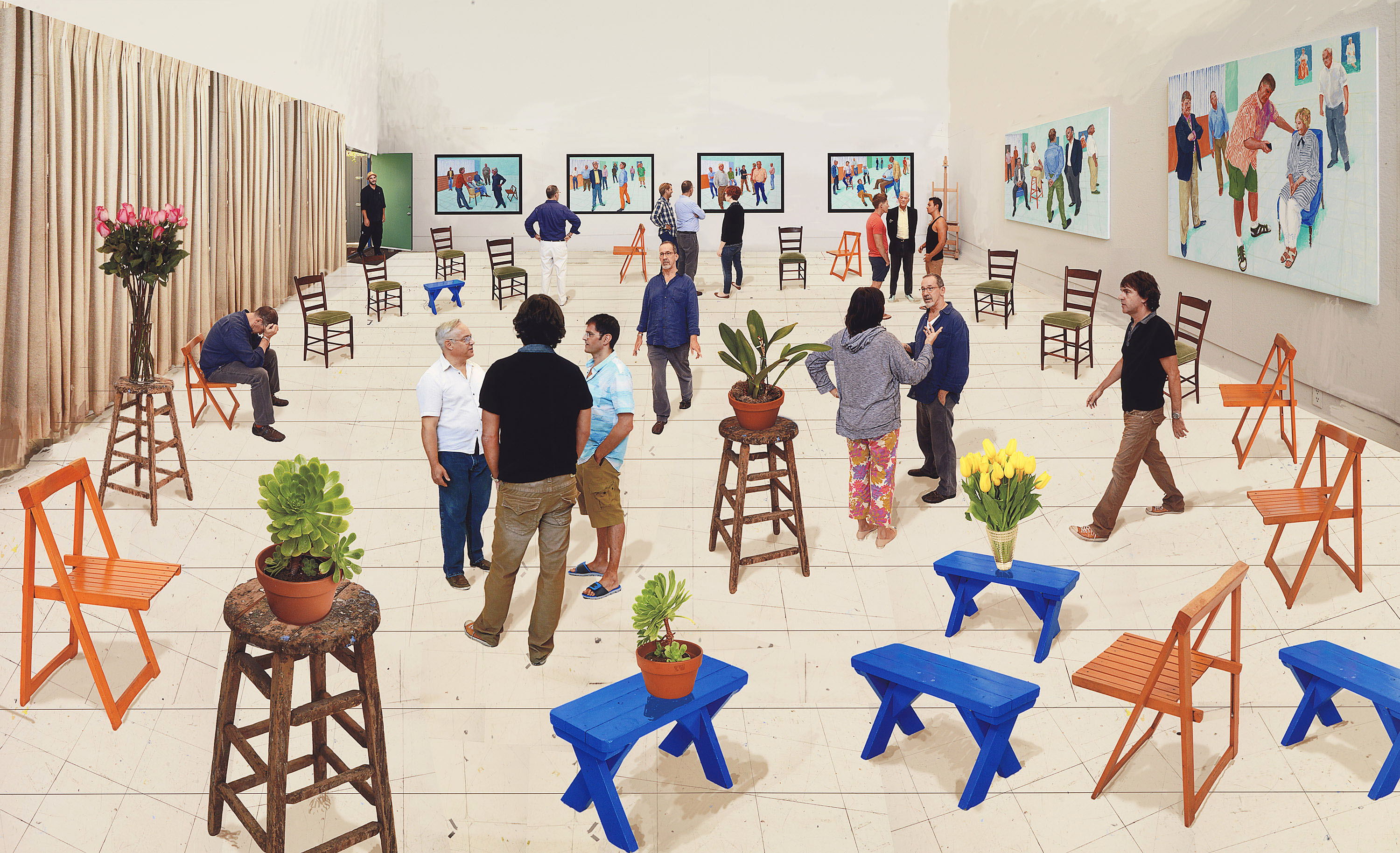


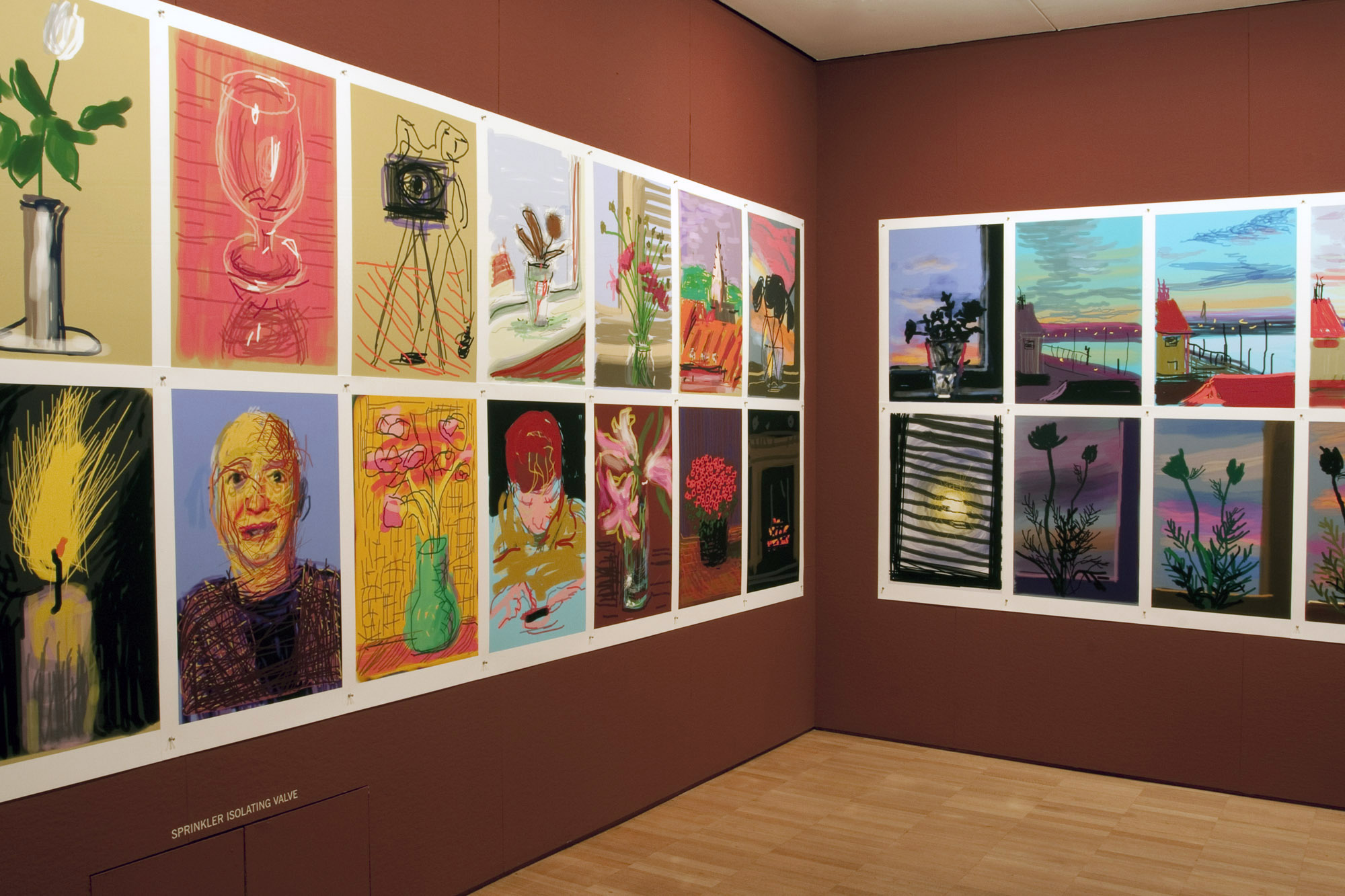
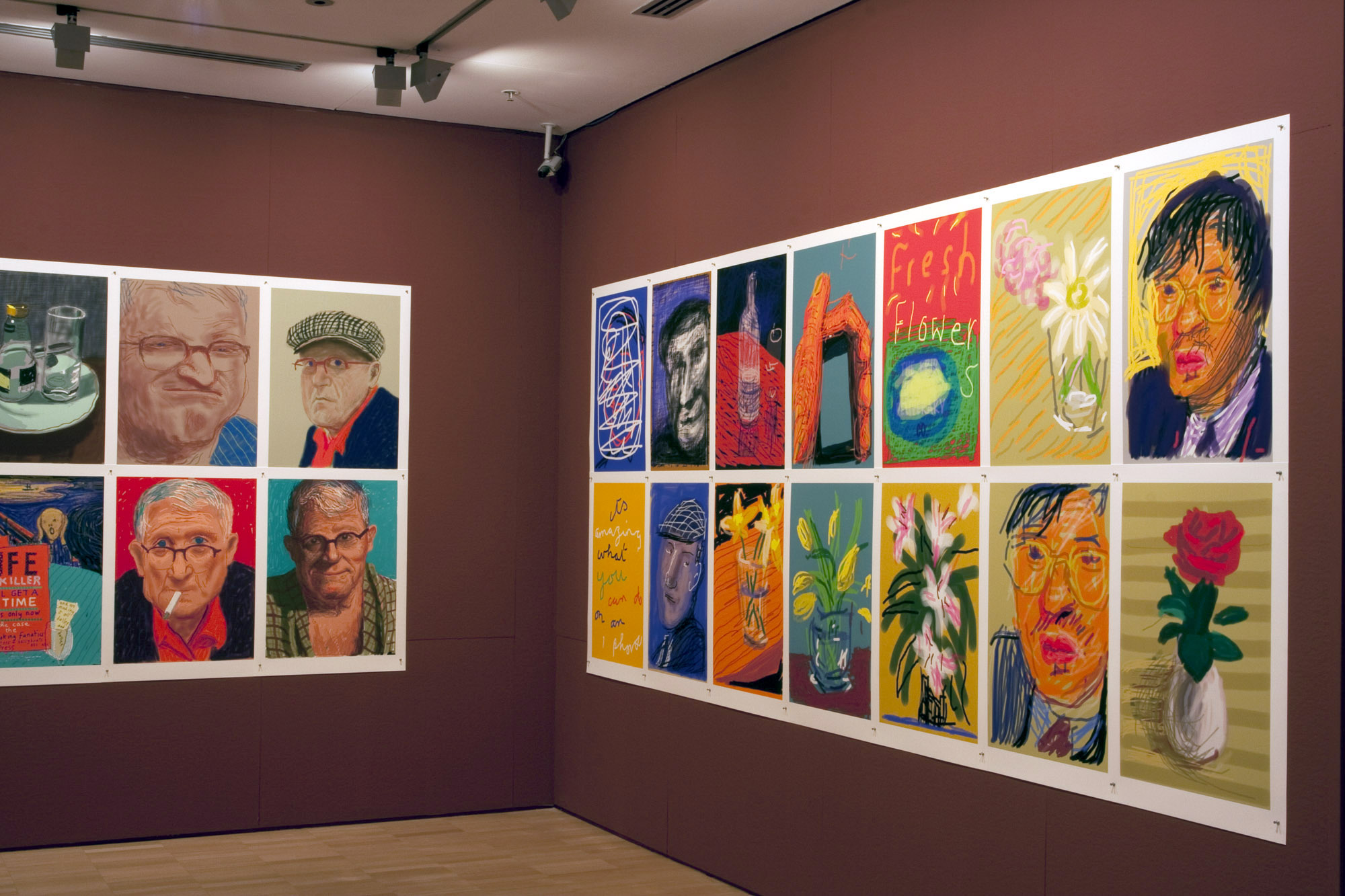


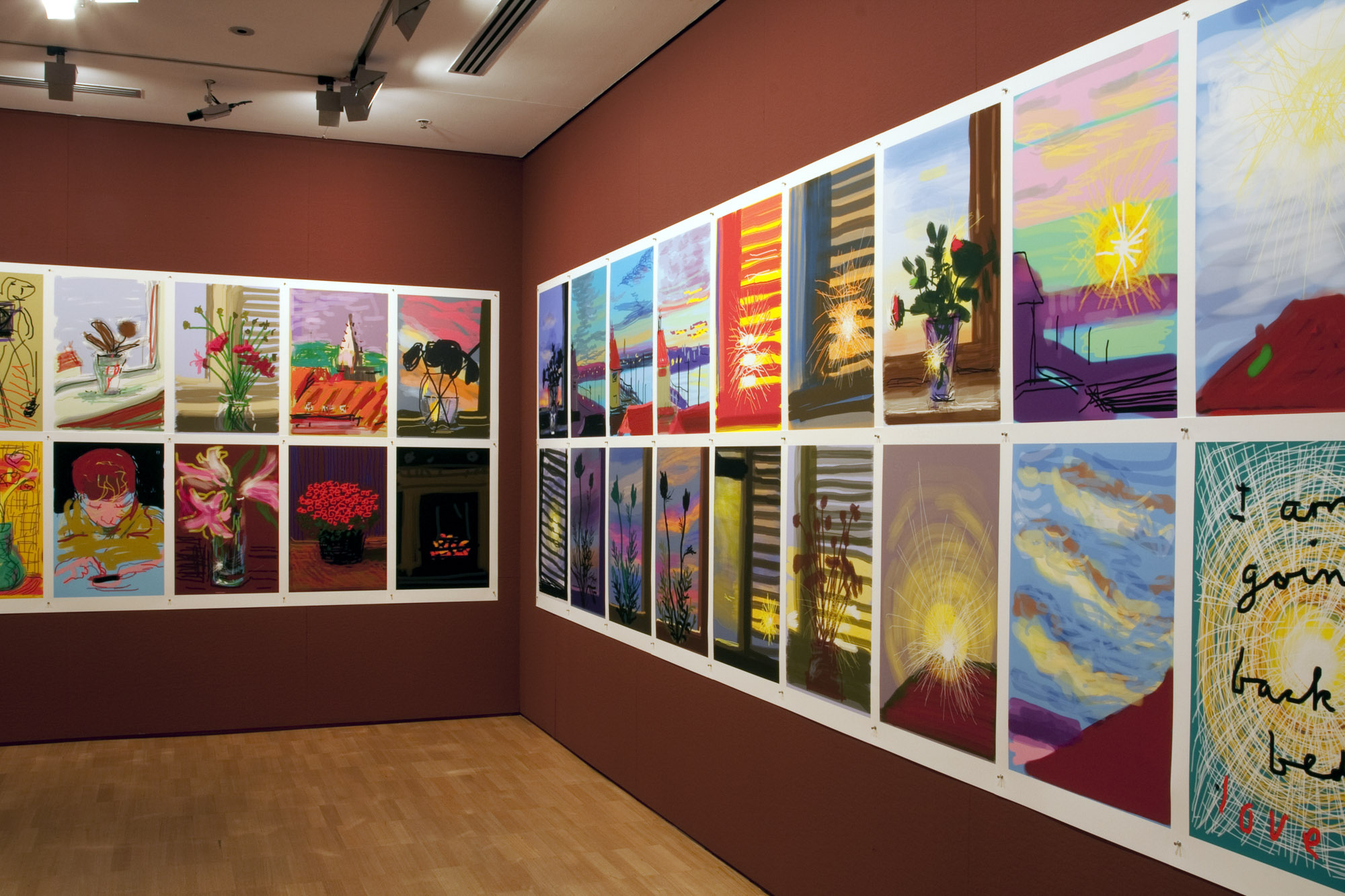
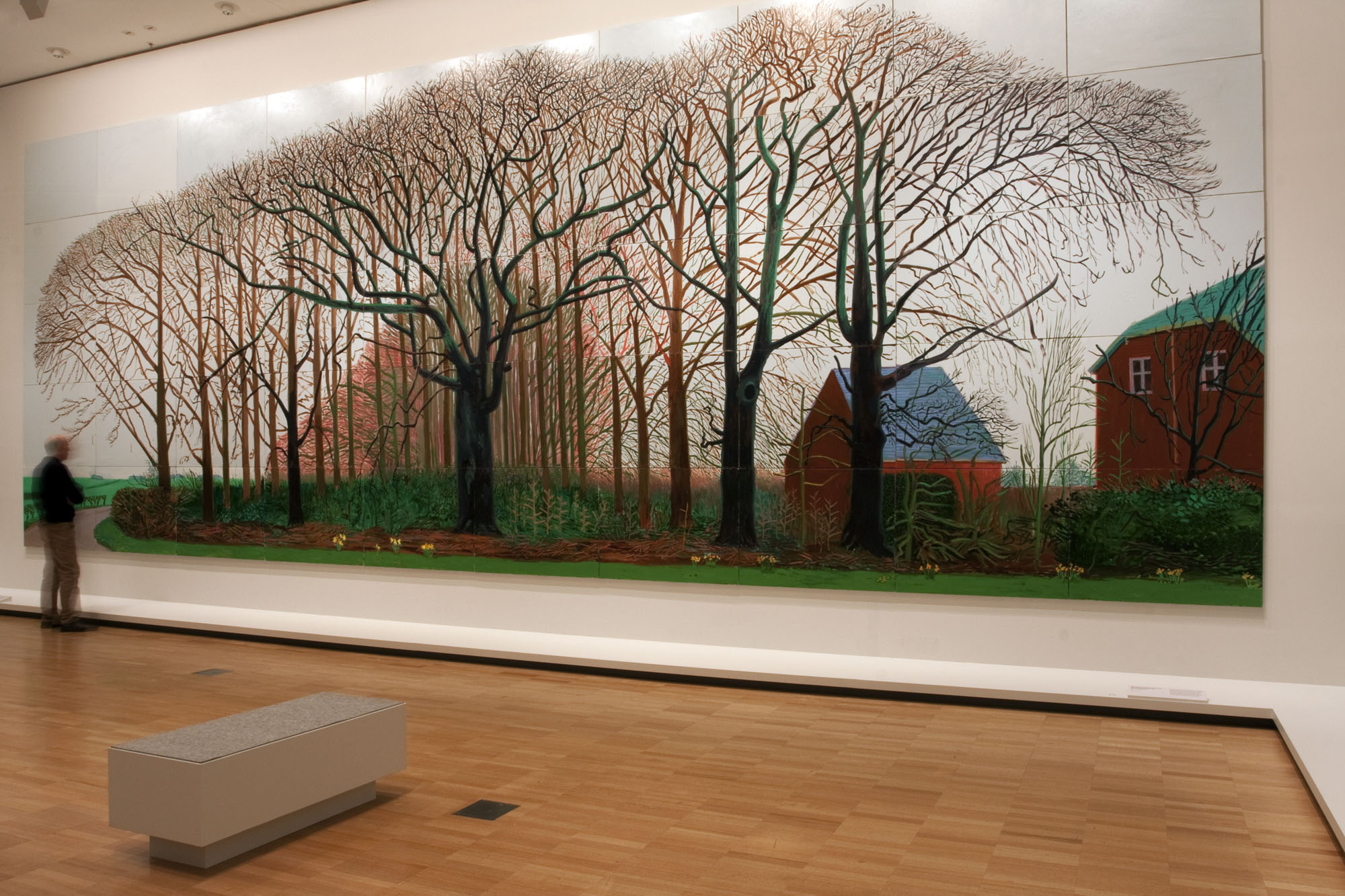
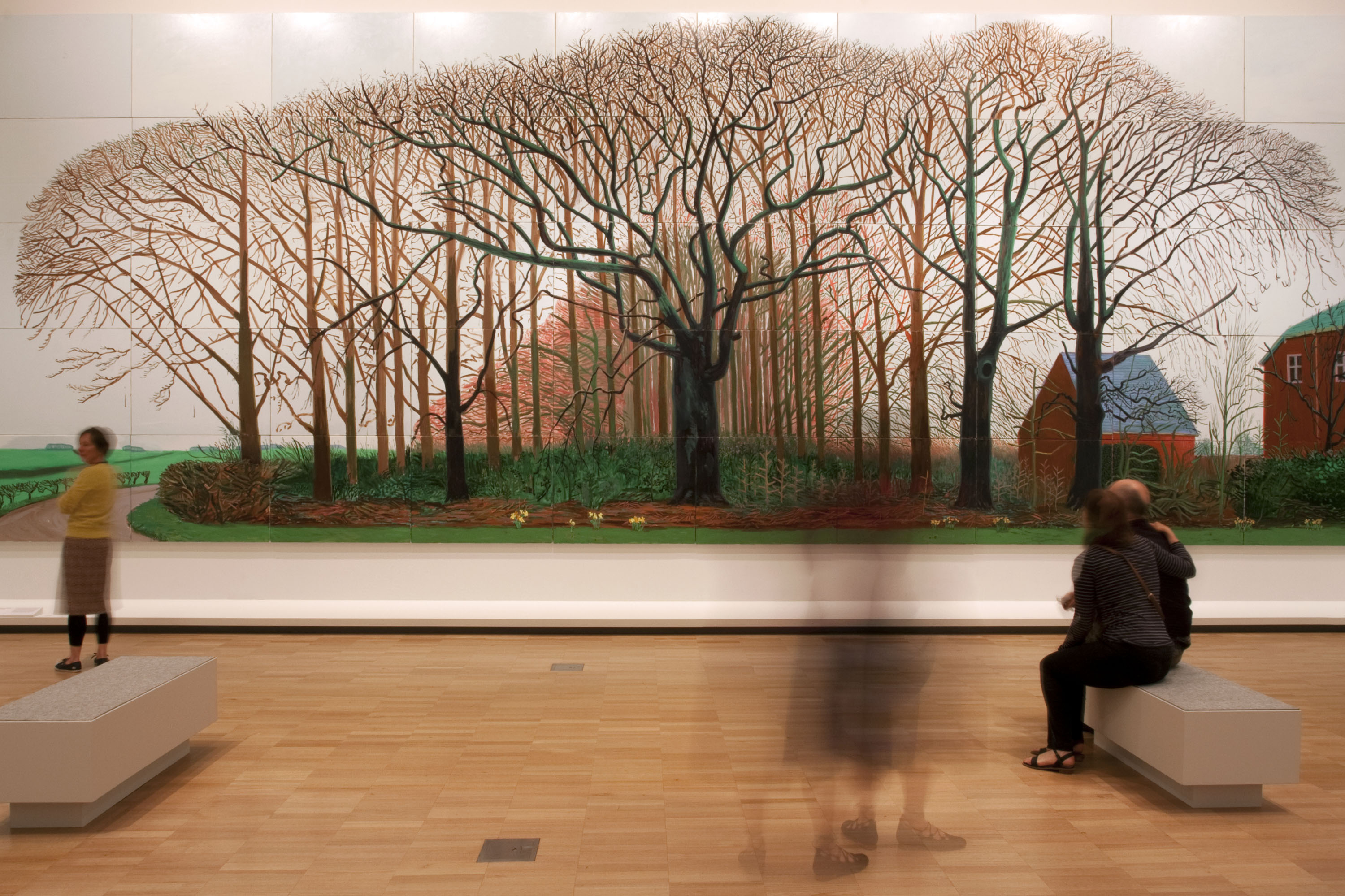


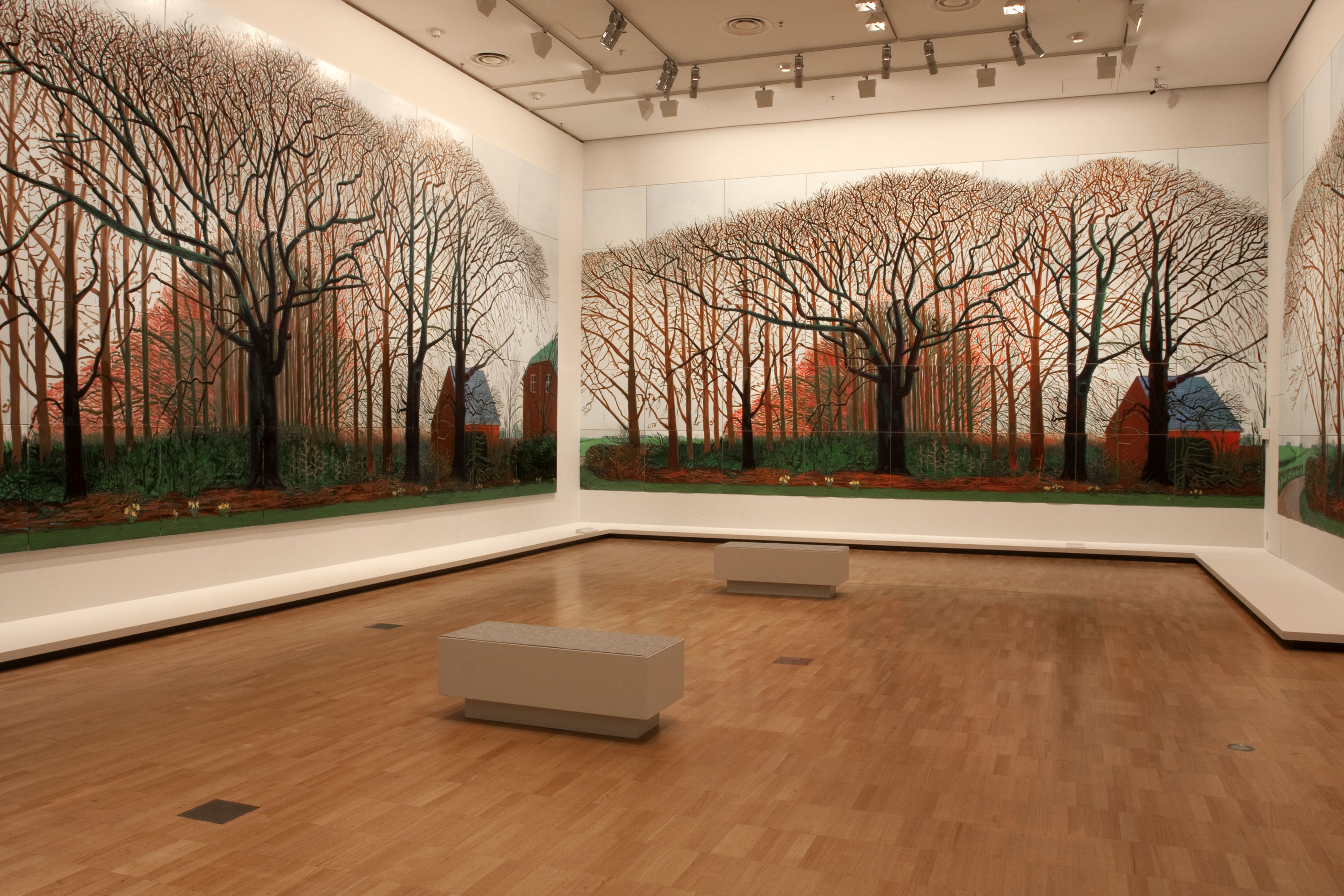
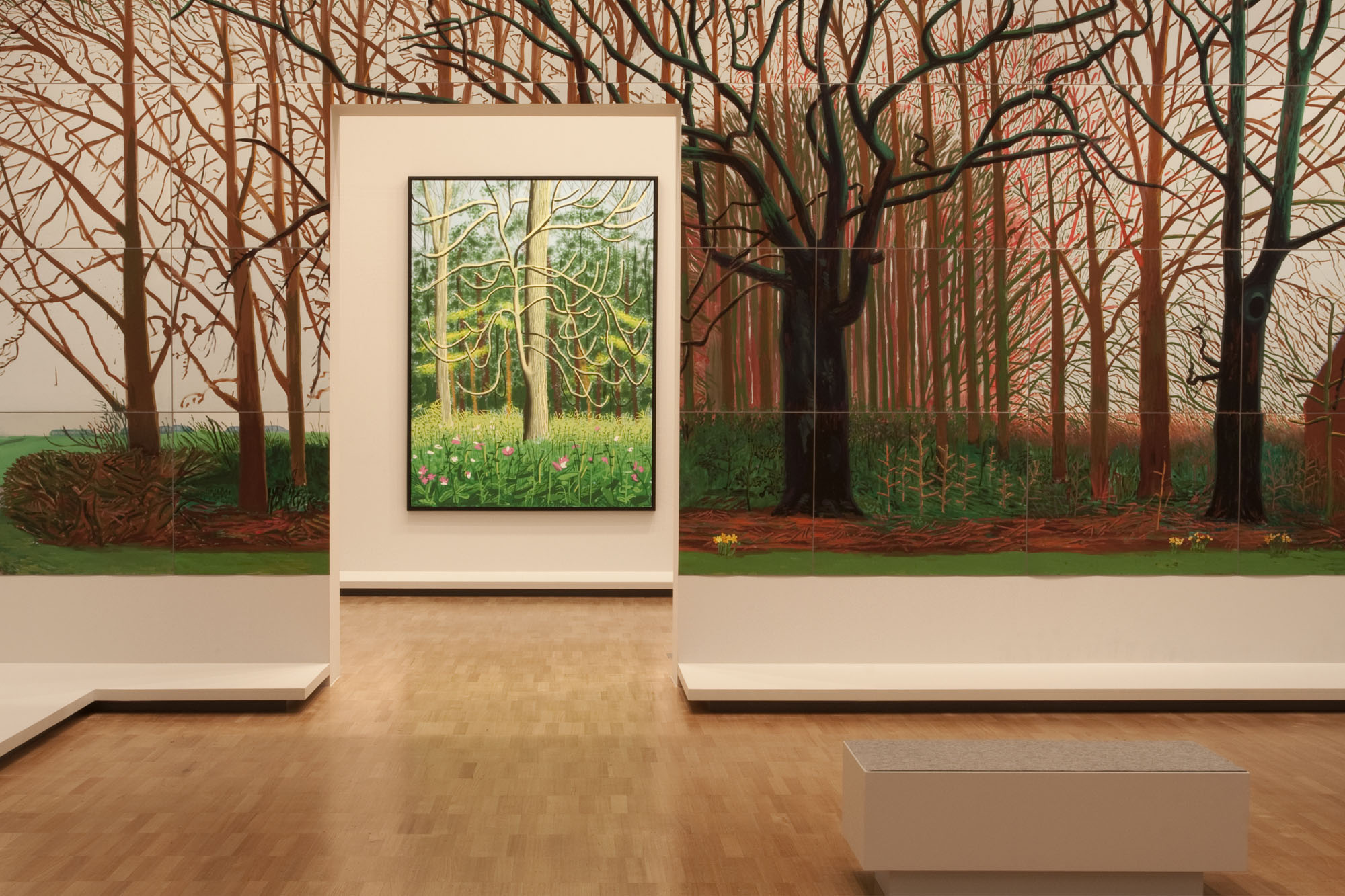
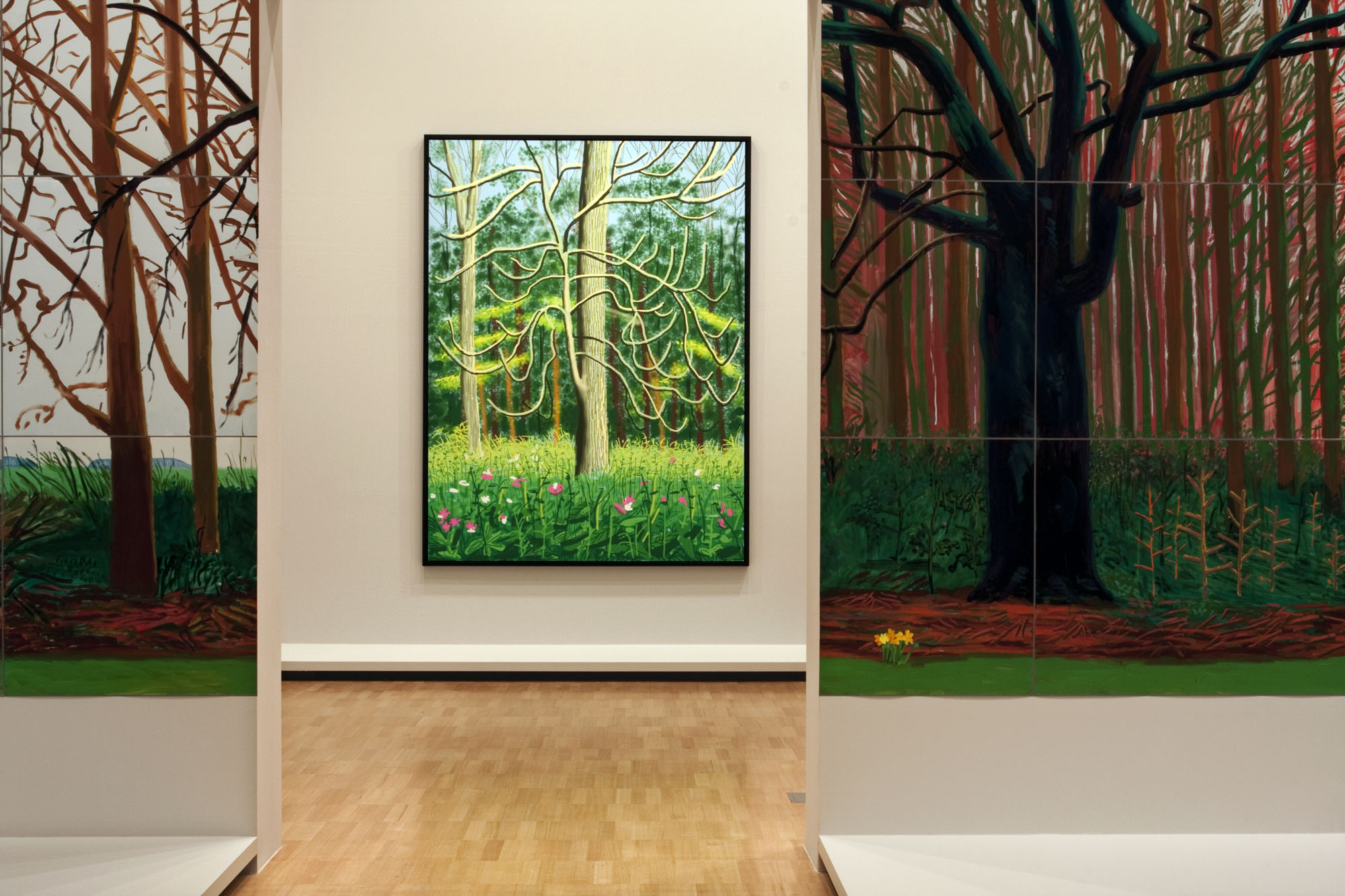
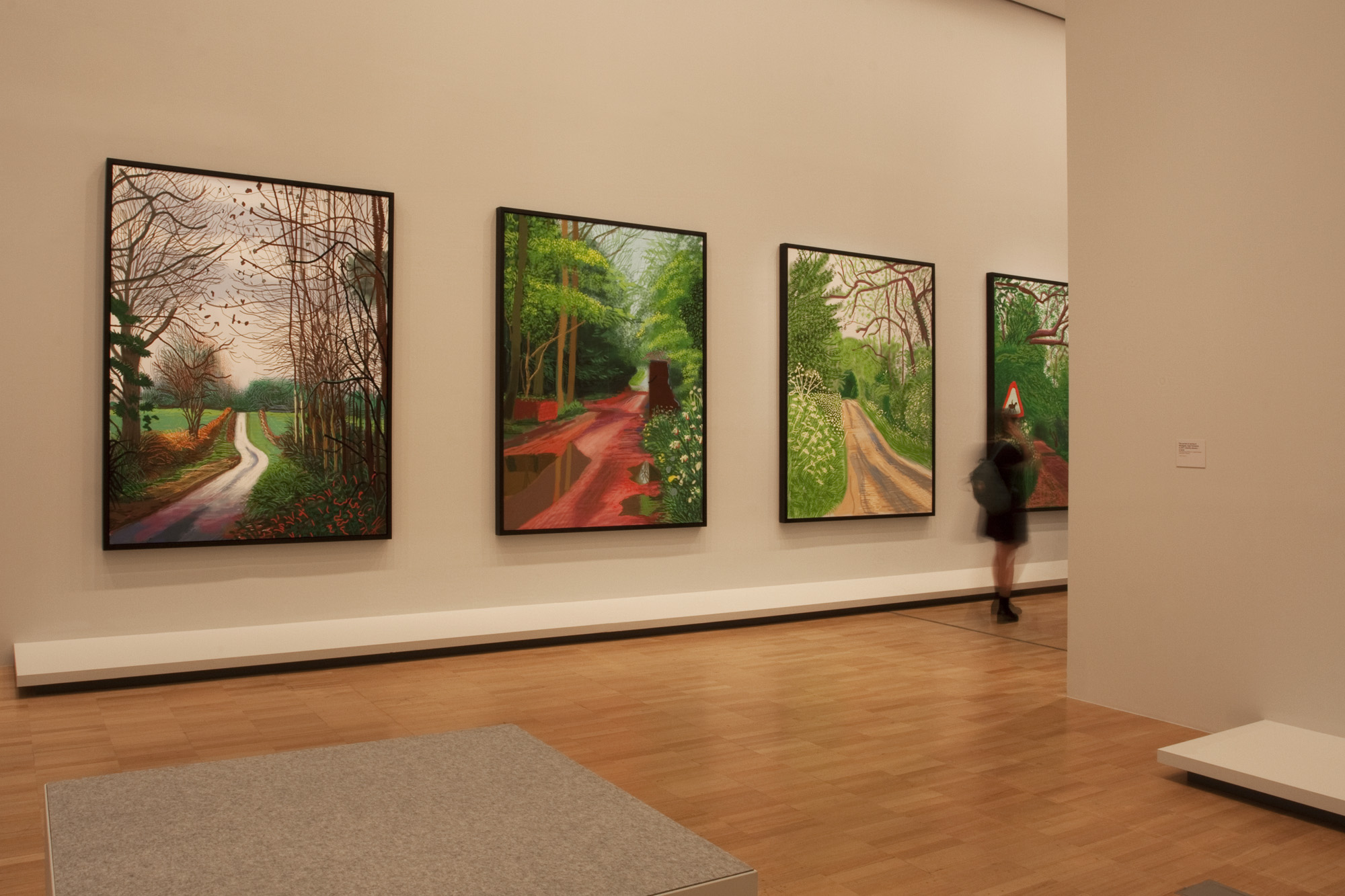

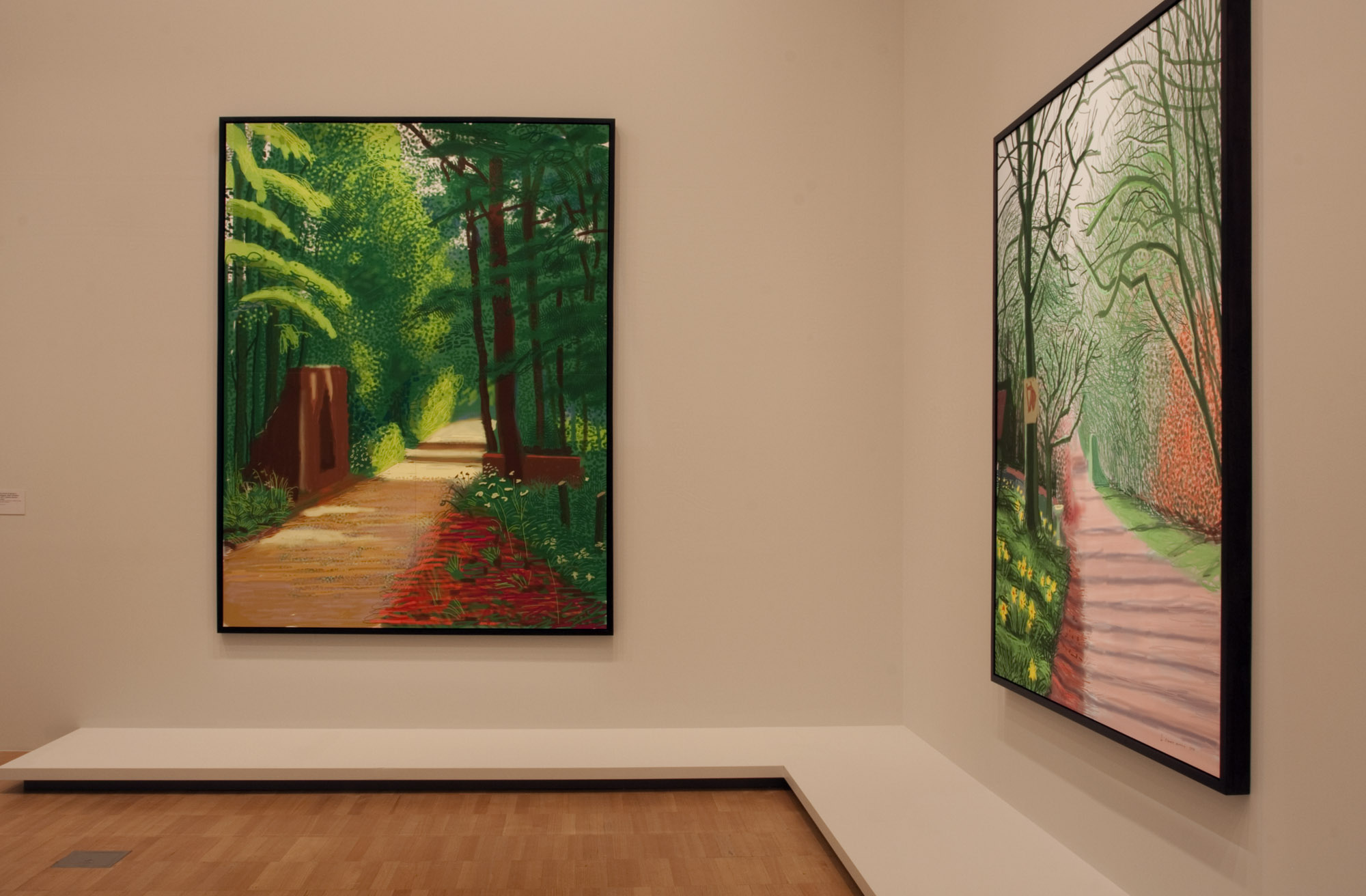

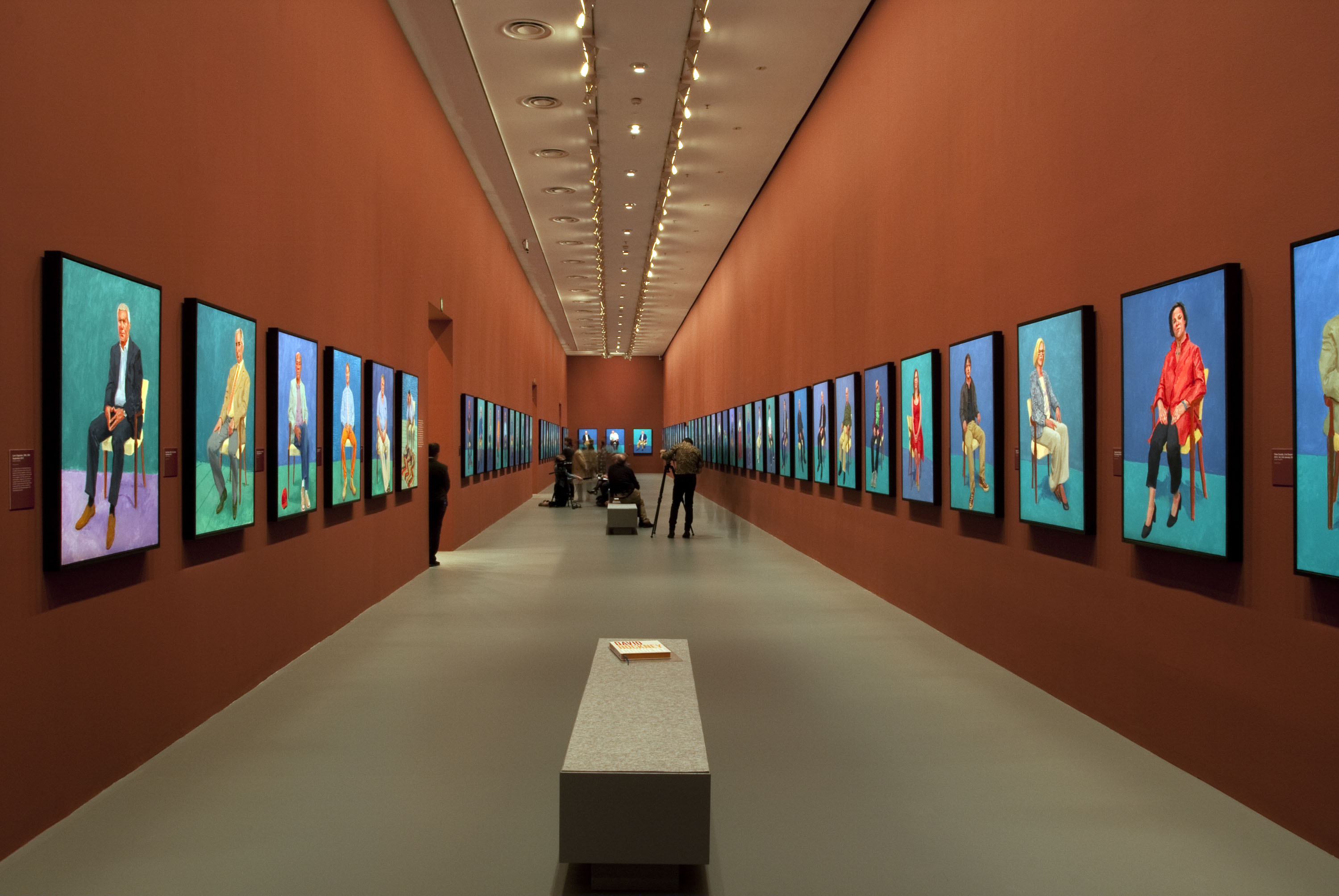
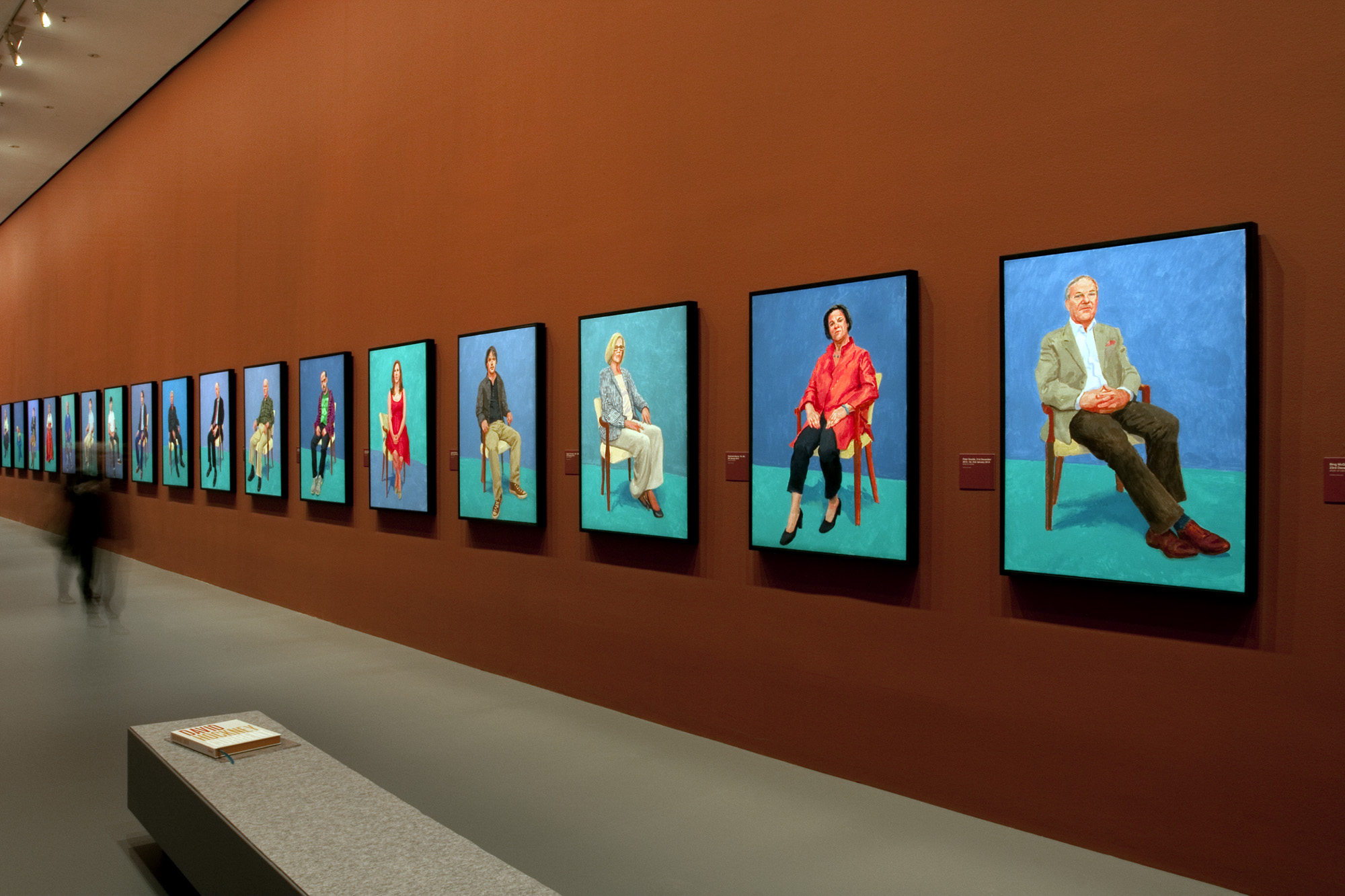






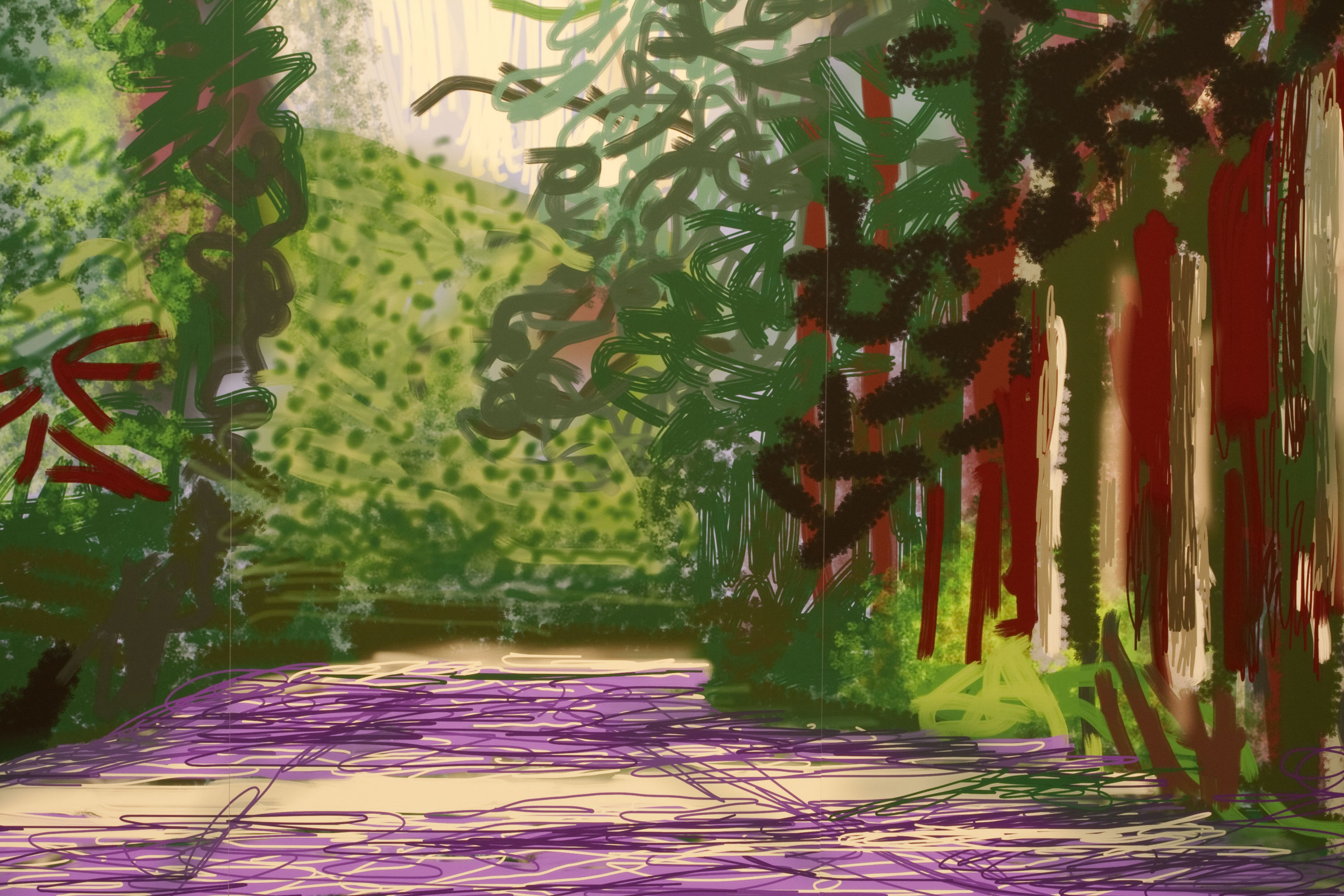
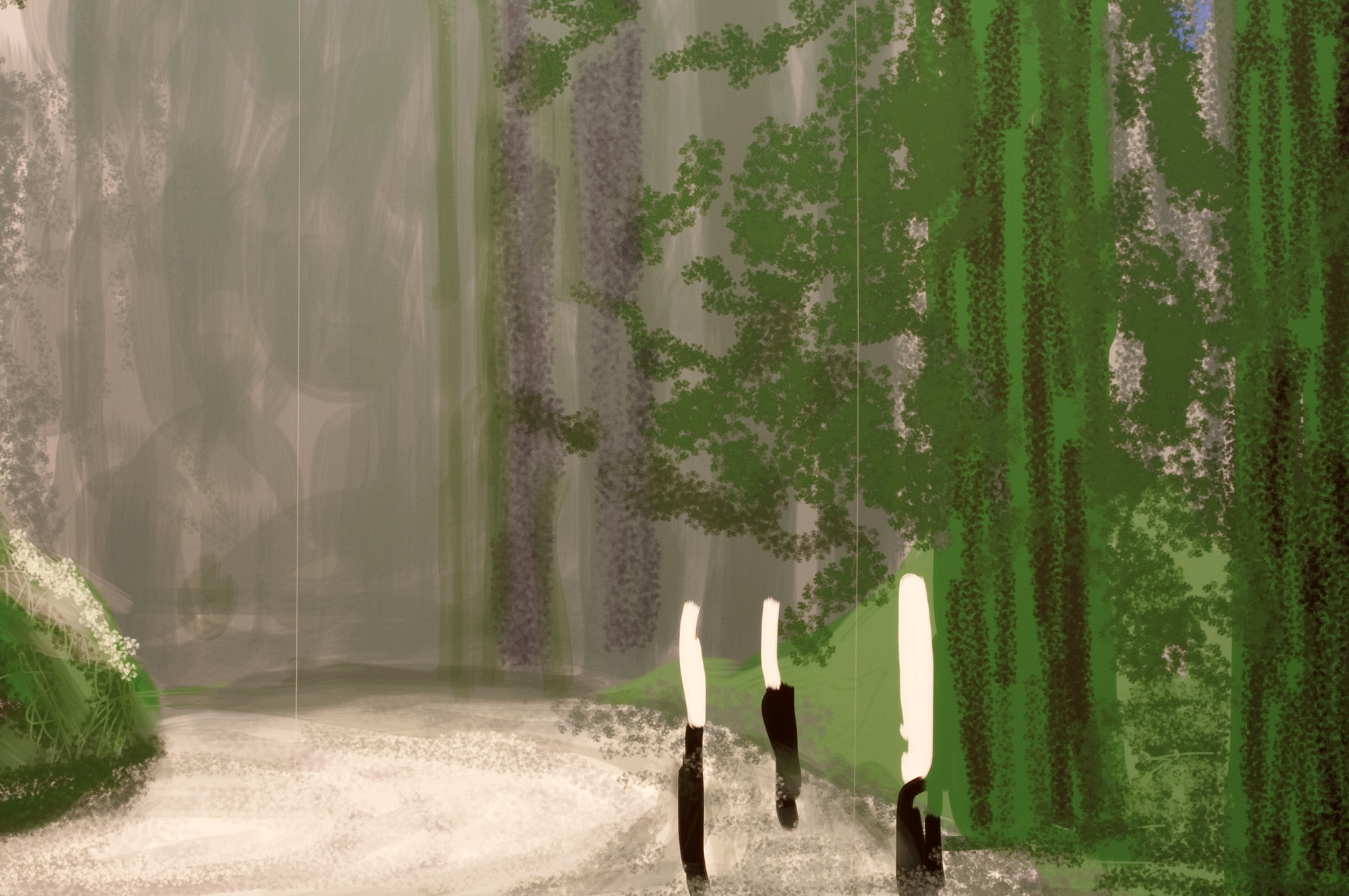

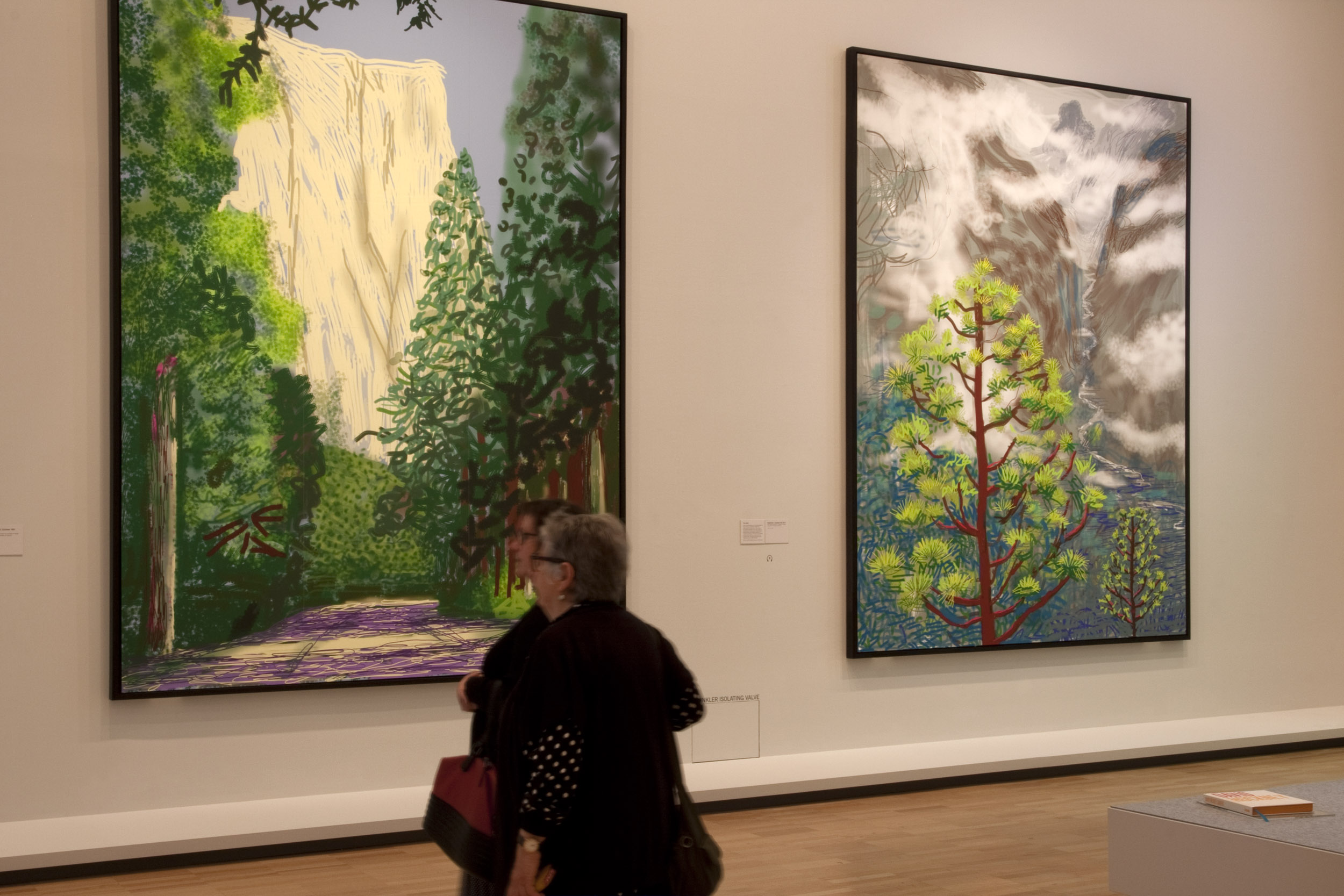


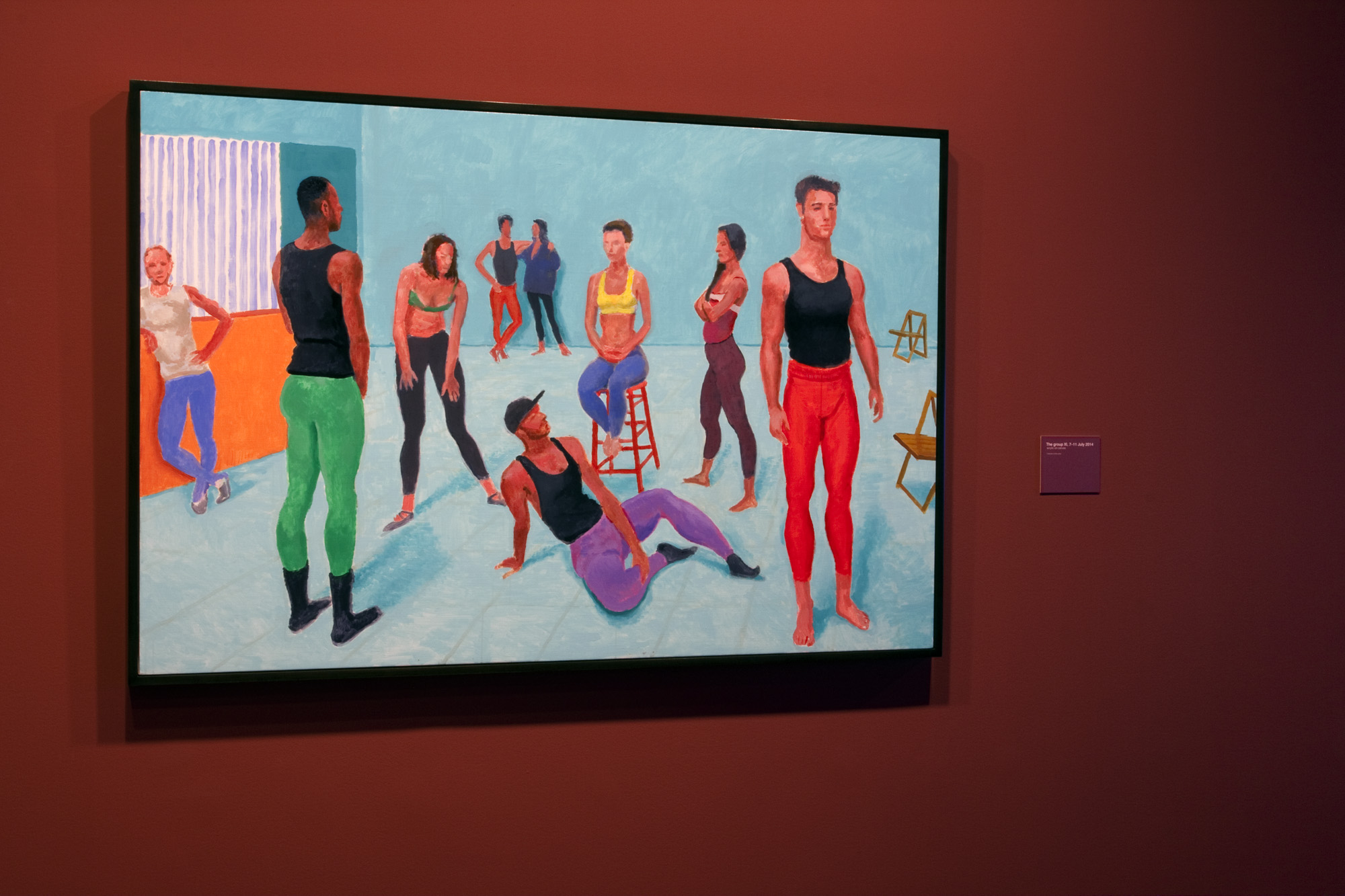
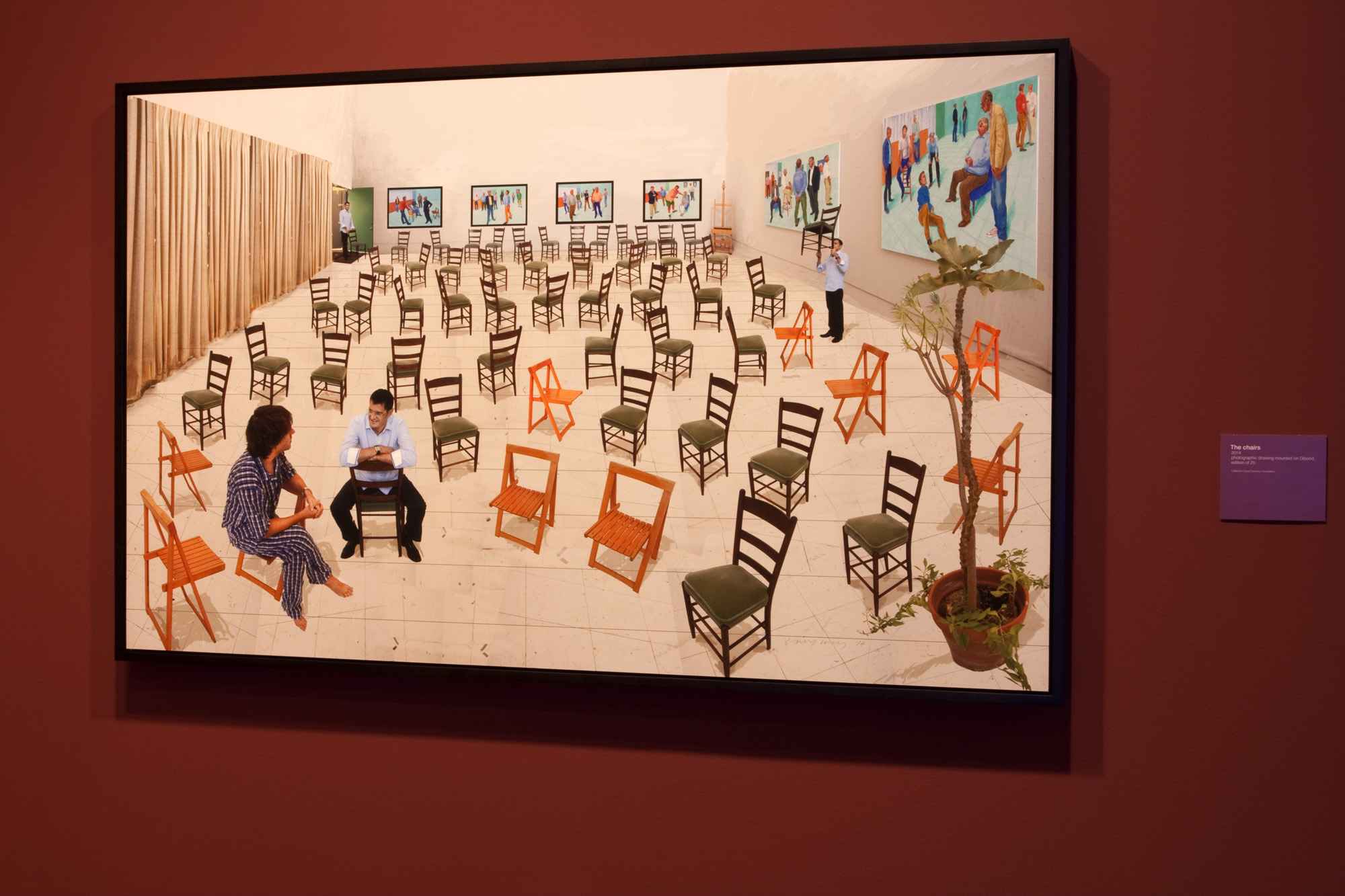

You must be logged in to post a comment.